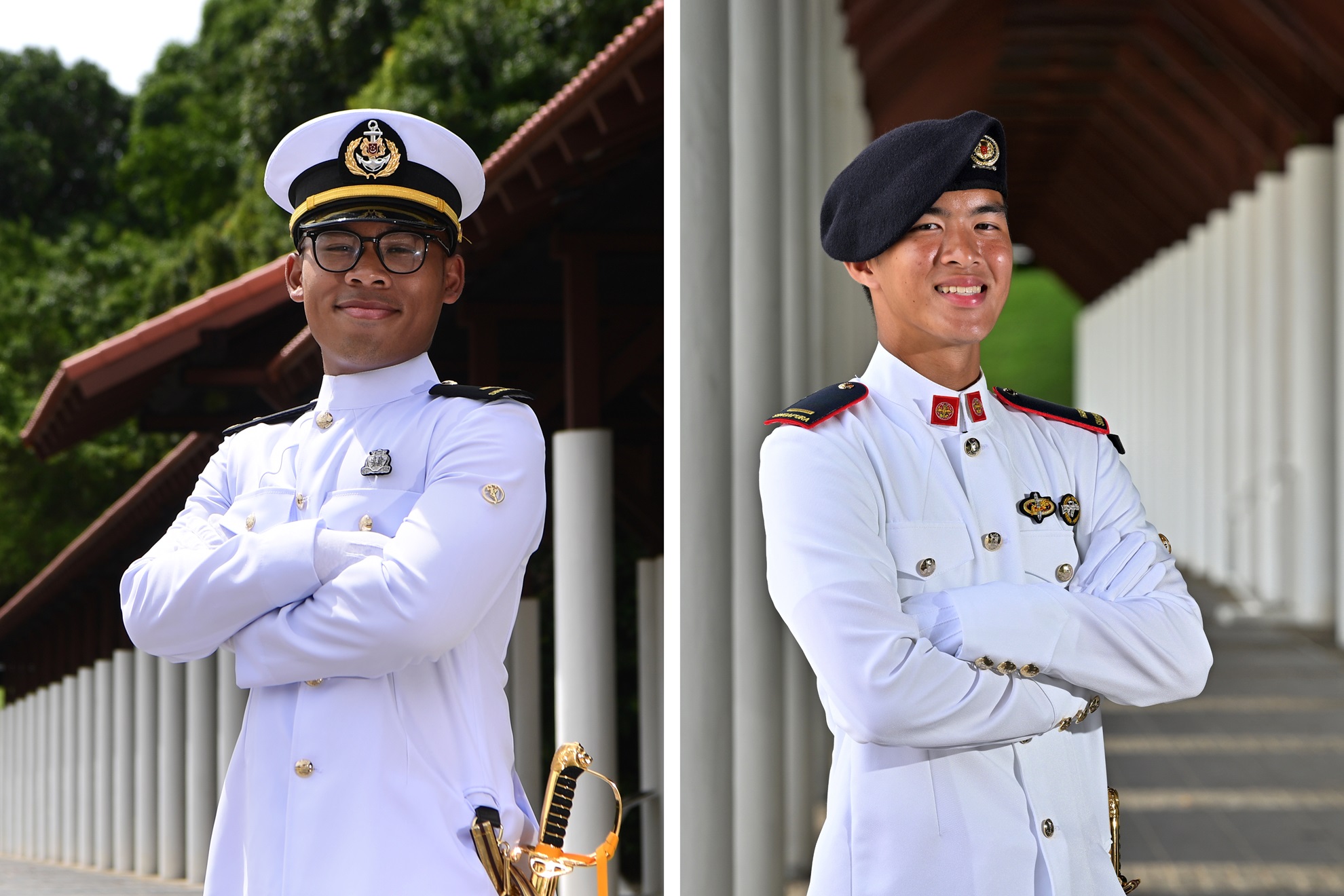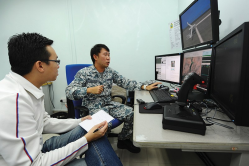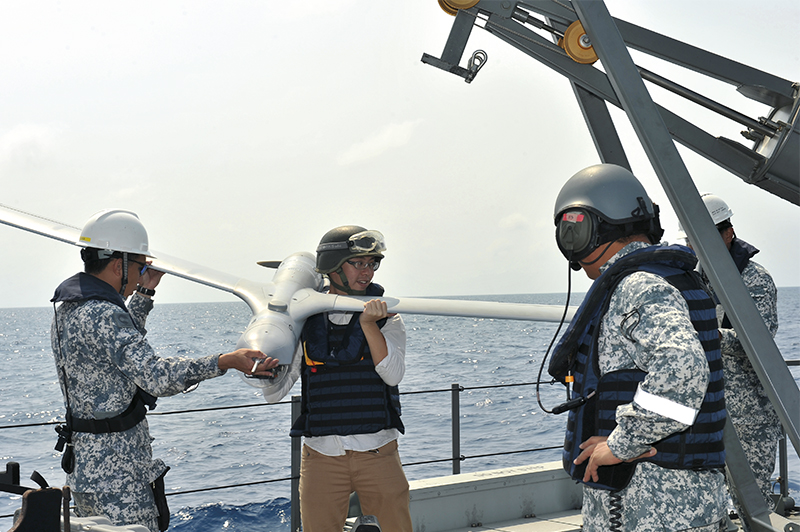PEOPLE
PILOTING A DRONE
16 Apr 2014

PIONEER journalist Koh Eng Beng goes on board a Missile Corvette (MCV) to fly the ScanEagle Unmanned Aerial Vehicle (UAV).
When I was told to test out the ScanEagle Unmanned Aerial Vehicle, I was gleefully excited because this would probably be my first and only chance to fly a plane in my lifetime.
The plan was for me to launch the ScanEagle UAV on board RSS Vigour, a Republic of Singapore Navy (RSN) MCV, during a three-day sail.
But before that, I had to go through training on a UAV ground control simulator. My instructor was Military Expert (ME) 2-2 Eric Oh, a UAV supervisor, who had the unenviable task of trying to squeeze a 10-week syllabus into a three-hour crash course.
Through the session, I learnt that operating the ScanEagle UAV is just like flying a commercial plane: conduct a preflight check, take off, switch to autopilot, and land. The preflight check was mind-boggling, with over a hundred steps to be completed sequentially.
"Verify AC Power and Shore Power Connection"
"Verify Wing Video Transmitter"
"Initiate Launch Sequence"
I struggled to understand the checklist shown on the simulator screen. So ME2-2 Oh did most of the tasks while I observed. He then walked me through the process of plotting the flight path and controlling the camera.
The real deal
Two weeks later, I went on board RSS Vigour with the UAV operators from 188 Squadron (SQN). Since I had fiddled - and struggled - with the preflight checks during the simulator training, I went out to the ship deck to be a ground crew member.
In the RSN, all UAV operators are cross-trained, and they take on the roles of the pilot and ground crew on a rotational basis.
With the ground crew, I opened up the container which stored the components of the ScanEagle UAV, fixed the wings onto its body, and carried the assembled unmanned system to the launcher. It was a challenge balancing the 20kg UAV on my shoulder when the ship was swaying because of the choppy sea conditions. And I could truly feel the full weight of the ScanEagle UAV's six-digit price tag!
After the preflight check was completed, it was show time. As I knelt behind the ScanEagle UAV, now resting on the launcher, I could see its propeller spinning faster and faster, and hear its engine revving louder and louder.
My heart went into overdrive; I was a bundle of nerves. What if I screwed up? After 10 minutes of waiting in agony under the scorching sun, the lead ground crew, ME2-2 Jackie Thang, passed me a green rope.
The moment had come - I gave the rope a hard tug, and in a split second, the launcher catapulted the UAV into the blue sky.
After the successful launch, I went to the UAV Ground Control Station (GCS) located in the Combat Information Centre of the MCV.
There, UAV pilot ME2-2 Eric Fong showed me the live video feed of RSS Vigour in full colour - captured by the camera on board the ScanEagle UAV. The UAV camera was pointing at our ship - from over 3km away.
I then tried out the joystick which controls the camera, which could pan left and right and zoom in. I also got to plot a new flight path for the UAV. Easy stuff. But only because I got to concentrate on one task at a time. A real UAV pilot not only has to juggle all these tasks simultaneously, but also monitor the multiple on-screen instruments.
Recovery
After an hour of flight, I was out on the deck again where the ground crew had set up the sky hook recovery system - a snagging line suspended from a 15m boom. It was time to recover the ScanEagle UAV.
I shadowed ME2-2 Ricky Tan, a recovery observer. When the UAV pilot in the GCS gives the go-ahead for the ScanEagle UAV to make its final approach, ME2-2 Tan would press and hold a "Clear To Land" switch until the UAV is recovered.
If at the last moment, the UAV is wobbling or blown off course by a sudden strong gust of wind, he has to release the switch. The ScanEagle UAV would then make a sharp right turn away from the ship to avoid a crash.
We stood at the edge of the deck to observe the ScanEagle UAV making its final approach, and in just a few seconds, it flew right into the snagging line. A hook in the left wing tip caught onto the line, suspending the UAV in mid-air.
It was a thrilling experience to fly the ScanEagle UAV from out at sea, despite my struggles with the technical aspects. But since I have acquired some experience, perhaps the Navy could send me for formal training. I will gladly serve my remaining In-Camp Training sessions with the UAV section at 188 SQN!
1) Moving the UAV to the launcher while enduring the choppy sea state.
Click to view GalleryALSO READ IN PEOPLE

Rising above the tide & stepping forward to lead
13 Dec 2025
They’re among the SAF’s latest batch of officer graduands this year. Meet 2LT Mohamad Wira Kuriniawan and 2LT Ryan Ong, who will be heading to the Navy’s 180 Squadron and 1st Battalion, Singapore Guards respectively.

Guardian of the skies, guardian of family heritage
08 Dec 2025

Father & son, bonded by service
02 Dec 2025





